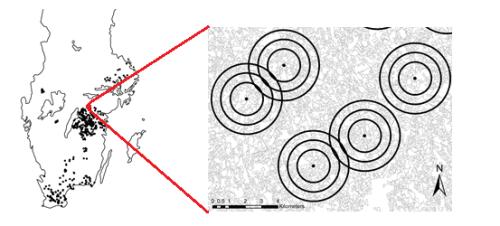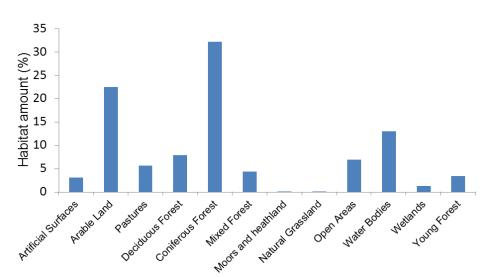Methods
I combined data from 14 independent studies that surveyed butterflies (Papilionoidea and Hesperioidea), burnet moths (Zygaenidae) and the two day-flying species of Sphingidae, Hemaris tityus and H. fuciformis in 473 semi-natural grasslands around Sweden (Figure 1).
Subsequently, I used the Swedish land cover database CORINE, the TUVA semi-natural grassland inventory and additional data on road verges and powerline corridors in Sweden to characterize the landscape surrounding the midpoint of each site. The area of 15 types of habitats and their heterogeneity in the landscape at 31 different spatial scales ranging from 100 m to 10 km was approximated.
Finally, I performed multiple correlation analyses to determine the scales at which different groups of butterflies respond to the amount of surrounding habitats using butterfly species richness as a response variable and habitat amount as a predictor variable.


The total study area was 33,633 km2 and it was dominated by coniferous forest (32%) and arable land (22%). Natural grassland and moors and heathland had the least amount of coverage (0.01 and 0.02% respectively) (Figure 2).
Responsible for this page:
Director of undergraduate studies Biology
Last updated:
05/23/13
